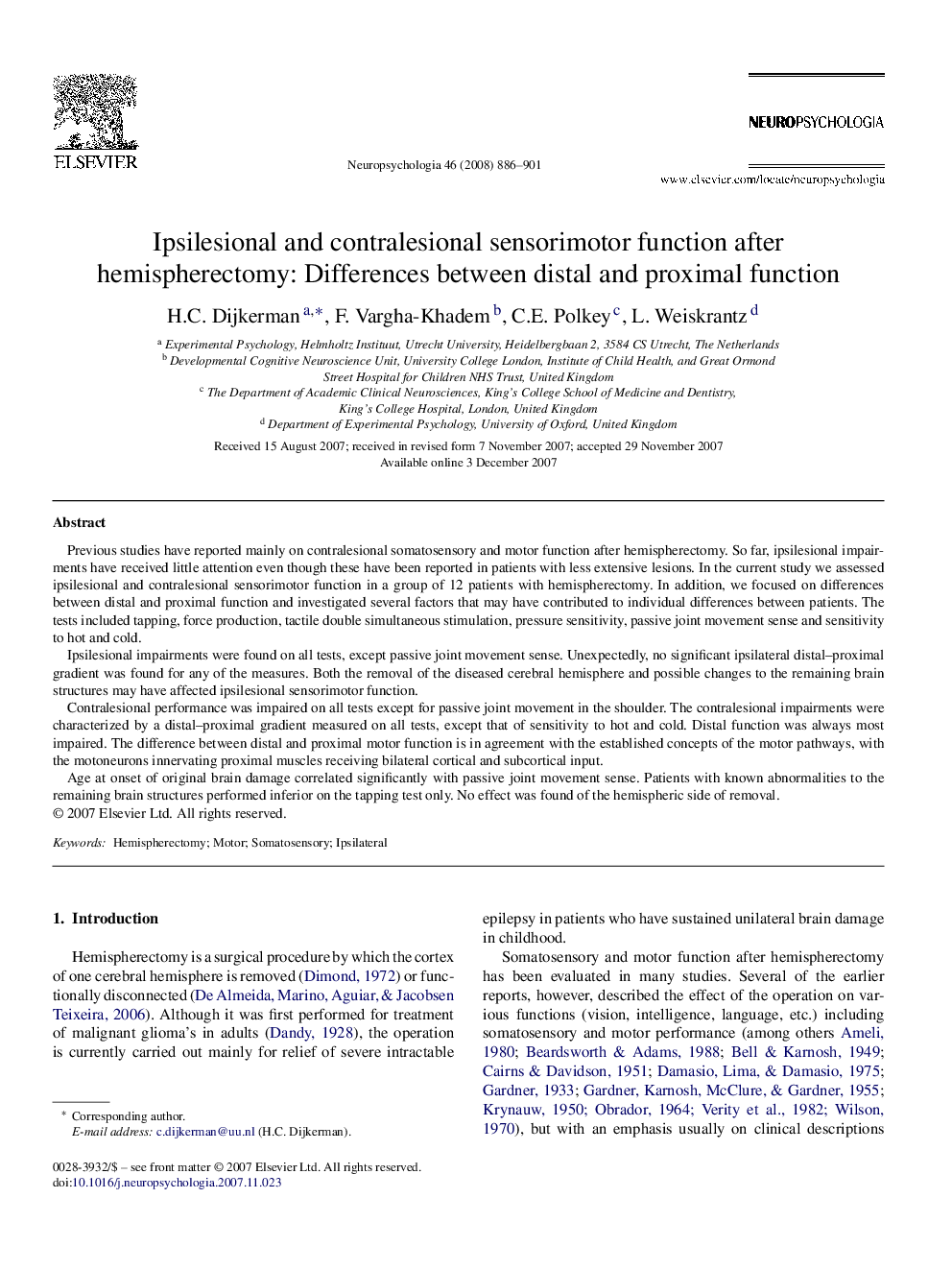| Article ID | Journal | Published Year | Pages | File Type |
|---|---|---|---|---|
| 945465 | Neuropsychologia | 2008 | 16 Pages |
Previous studies have reported mainly on contralesional somatosensory and motor function after hemispherectomy. So far, ipsilesional impairments have received little attention even though these have been reported in patients with less extensive lesions. In the current study we assessed ipsilesional and contralesional sensorimotor function in a group of 12 patients with hemispherectomy. In addition, we focused on differences between distal and proximal function and investigated several factors that may have contributed to individual differences between patients. The tests included tapping, force production, tactile double simultaneous stimulation, pressure sensitivity, passive joint movement sense and sensitivity to hot and cold.Ipsilesional impairments were found on all tests, except passive joint movement sense. Unexpectedly, no significant ipsilateral distal–proximal gradient was found for any of the measures. Both the removal of the diseased cerebral hemisphere and possible changes to the remaining brain structures may have affected ipsilesional sensorimotor function.Contralesional performance was impaired on all tests except for passive joint movement in the shoulder. The contralesional impairments were characterized by a distal–proximal gradient measured on all tests, except that of sensitivity to hot and cold. Distal function was always most impaired. The difference between distal and proximal motor function is in agreement with the established concepts of the motor pathways, with the motoneurons innervating proximal muscles receiving bilateral cortical and subcortical input.Age at onset of original brain damage correlated significantly with passive joint movement sense. Patients with known abnormalities to the remaining brain structures performed inferior on the tapping test only. No effect was found of the hemispheric side of removal.
